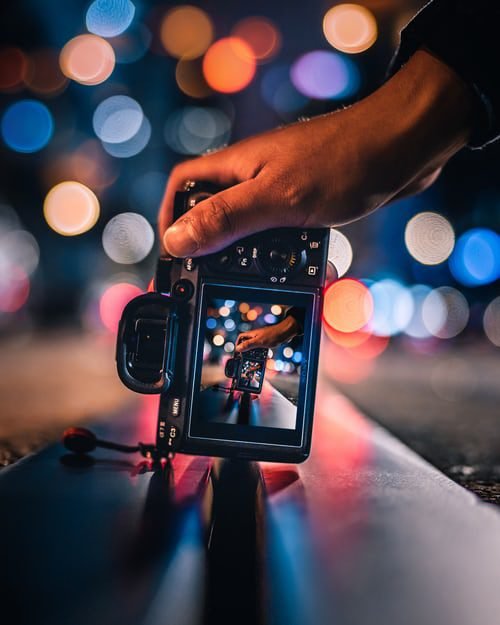Last Updated on March 22, 2024 by Nasir Hanif
Suppose you’re an avid amateur photographer or just like taking photos of your family. In that case, Digital photography software is helpful to enhance the overall impact of your photographs and assist you in creating the highest quality photographs you can get.
Most of the time, we assume that their ability to take great photos is only at the shutter click. But editing your images is just as crucial for the artistic result and for the best result use clipping path service.
Usually, photo editing software comprises the fundamental features that allow you to adjust the exposure and sharpening and to adjust the image’s color and cropping.
If, however, you’re committed to photography, you might want to purchase more advanced software with sophisticated options.
Table of Contents
What are you able to do using Photography Software?
Clipping path services is the best tools for photography. You can do a myriad of things using digital software, such as manipulating images to include or eliminate objects, objects, or subjects. Furthermore, suppose your parents or grandparents have a collection of older photos that are losing their appeal. In that case, the software can help you to revive the photos and revive the original splendour.
Additionally, many photography programs currently permit users to create enjoyable projects with their images, like making a photo album or a storybook. Furthermore, your images can be used to design elegant-looking greeting cards or calendars. Therefore, software for photography is not a tool for those who find photography to be a severe passion.
Should I Buy Photography Software?
As you are likely to be aware, there are a lot of free software programs that come with your computer’s software or are available for download for no cost. So, you might think that buying software isn’t necessary. Of course, it is contingent on the performance of your program and the goals you want to accomplish.
It is recommended to play with a trial version of a program before you purchase because it will allow you to understand what you can accomplish and the ease of editing. Your needs may be satisfied by a free program. There is the likelihood that you’ll desire or require more. In these situations, it is advisable to look into some of the offered programs for a minimal cost.
How to Find Good Software?
There are numerous ways to locate top-quality photography software. You can shop at your local computer store. However, you might discover it easier to compare the products on the internet. Most of these options also offer downloadable options, which means you will have access to the program you want to use almost immediately. If you’re unsure what program to pick, numerous websites and forums are dedicated to digital photography. They provide user reviews and tips. After experimenting with a free version of photography software, you’ll have an idea of what your desires and requirements are.
You’ve spent your hard-earned dollars on purchasing your first DSLR, or maybe it’s your very first DSLR, and you’re looking to go beyond capture photos with an auto. Are you ready to read the manual, enroll in a course, or even purchase some books on digital photography? The main question is where to start and how can you begin? I’ve got some fantastic digital photography tips that will help you along the path towards becoming a professional photographer.
Even if you’re not going through the professional photography route doesn’t mean you shouldn’t be able to capture top-quality photographs like professionals. Every new gadget could be a challenge for those new or not so experienced; however, don’t worry because some easy steps help make it easier to get started.
1. Make sure you feel comfortable with your camera.
Before reading your manual, or go through the quick start guides, play around with your camera. Check that it’s set to auto mode and then take some pictures. Feel the camera how it feels when you press the shutter and how the camera feels in your hands. It’s likely to become your photographer’s friend for a time. The most important thing is familiar with the various buttons. They don’t need to know the meaning behind them or their purpose; however, they should be aware of where they are located. Press any button carefully and observe what happens. The reason to get familiar with the device is that when you read the instruction manual, and it mentions the button that has moon and star, you’ll know exactly where it’s located. Once you are aware of where the buttons are, you’ll be capable of following the instruction.
2. Go through the guideline
The first thing you should do is grab an eraser pen and begin with the manual’s first page. Highlight each chapter or section headings that you’re familiar with and are proficient with. After completing this, you can begin working through the chapters that aren’t highlighted to comprehend the functions or settings described in the chapters. If you find it difficult, move on to the next section, and when you’re comfortable with the specific camera feature, mark the relevant section of the instruction manual. Once you’ve completed this test, you’ll be aware of what you must ask for help or look more about.
3. Experiment
This is a logical task since you must begin at the beginning of the manual. You can then test various settings before working out what impacts your final picture. Consider white balance, for instance. It is of no use to non-photographers since it is a feature that is unique to digital photography and requires to be understood. Take a picture, then alter the different white balance settings to see what happens. Do this with all of the different functions on your camera. What you are trying to achieve is a better understanding of all the menus, buttons, and knobs on your camera. Then you can be imaginative with your final compositions and pictures. When you know the controls of your camera, you’ll be able to understand the effect they influence your compositions.























